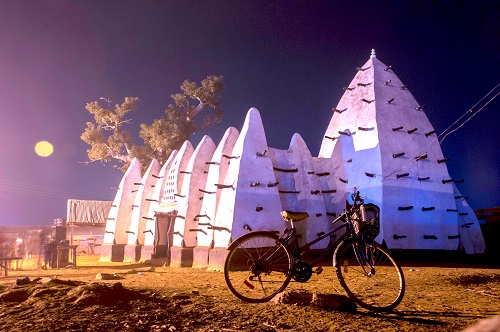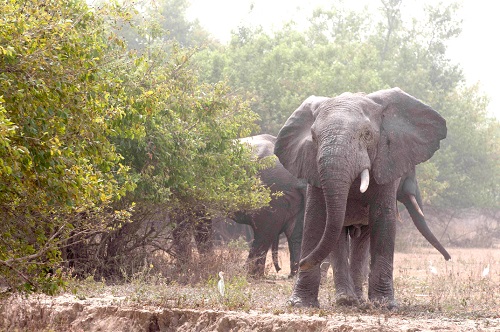
Damongo, constituency with rich culture, history
On Tuesday, July 4, 2023, the President H.E. Nana Addo Dankwa Akufo-Addo, commissioned the renovated and modernised Kwame Nkrumah Memorial Park, here in Accra, with a commitment to make Ghana the tourism hub of West Africa.
Advertisement
It is in that spirit that I write about my beloved constituency, Damongo, arguably, the number one tourist destination in Northern Ghana.
The constituency is made up of 104 towns, villages and communities, with a population of about 63,000 peaceful and hospitable people.
The vibrant town of Damongo, which serves as the capital of the constituency, the West Gonja municipality, as well as the Savannah Region, exudes cultural richness, historical significance, and awe-inspiring landscapes.
Its strategic location and cultural diversity makes it an exceptional destination for tourists seeking to immerse themselves in the beauty and traditions of Ghana and West Africa.
Damongo, also, serves as the capital of the Gonja Kingdom, as recognised by the Declaration of Customary Law (Gonja Traditional Council) Instrument, 2010, and visitors are assured of the rich history and culture of the Gonja People.

Having migrated from ancient Songhai Empire, the Gonjas entered present day Ghana in 1546, under the leadership of Askia Mohammed, who ruled for over three decades before handing over to his son, Musa Askia, then to Landa, Wam, Amoah and then Lanta Limu, the father of Yagbonwura Ndewura Jakpa, the founder of the modern Gonja Kingdom.
Damongo hosts the famous Yagbon Skin, and since Yagbonwura Awusi Ewuntomah Bunyangso, who ruled the Kingdom from 1942 to 1975, moved the seat of the Gonja Kingdom from Nyange, in the Sawla-Tuna-Kalba District to Damongo, which at the time was said to be made up of less than a 10 — household community, all Yagbonwuras—Yagbonwura Mahama Abudu Kurabaso (1975 to 1982), Yagbonwura J.A.Braimah Timu (1983 to 1987), Yagbonwura Kanyiti (1987 to 1990), Yagbonwura Bi-Awuribi (1990 to 1992), Yagbonwura Ale Adengi Tikpiri (1992 to 1993), Yagbonwura Amantana Bore Nyinche (1993 to 2000), Yagbonwura Bawa Abudu Doshie (2000 to 2010), Yagbonwura Sulemana Jakpa Tuntumba Boresa I (2010 to 2023), and now Yagbonwura Bikunuto Jewu Soale I, have lived and sat on the Jakpa Skin in Damongo.
In the colonial days, Damongo became a very important administrative centre for the colonial government, serving as a link between the northern parts of the country and the southern parts.
It was, therefore, not surprising, that the colonial government’s policy of pursuing mechanised agriculture through the Gonja Development Company was piloted in Damongo.
As the Colonial Office explained, “we have all been looking to Damongo as a pilot scheme to produce basic information for a future pattern of peasant agricultural development.”
The diversity of peoples and cultures in the constituency make it exceptionally unique.
In addition to Gonjas, there are Nchumurus, Nawuris, Basaris, Vaglas, Safalbas, Mos, Lobis, Dargabas, Gurunes, Sissalas, Grusis, Kasenas, Bimobas, Tamplumas, Hangas, Brifos, Mmaras, Pantras, Miwors, Bartiges, Dagombas, Konkombas, Akans, Hausa, Fulanis, Grumahs, Chokosis, and Bators, living peacefully and intermarrying to form families of mixed ethnic groups.
Attractions
Some of the most attractive events in the Constituency include our festivals such as the Damba festival and the Fire Festival (also known as Jintigi).
The Damba Festival is celebrated to mark the birth and naming of the Holy Prophet Mohammed (Peace be upon him), while the Fire Festival is used to mark the landing of Noah’s Ark on Mount Arafat, after the flooding God sent to destroy the earth.
These festivals offer a glimpse into the rich cultural heritage and provide an opportunity for our people and visitors to partake in traditional rituals, music, dance, and communal feasts.
In addition to the festivals, there is the famous Larabanga Mosque, one of the oldest mosques in Africa, and I should say the world, which has been christened “the Mecca of West Africa,” located in Larabanga, about 16km from Damongo.
Legend has it that the mosque was built around 1421 by an Islamic trader called Ayuba from mud and sticks, in a Sudanic-Sahelian architecture.
According to Islamic history, Ayuba slept in the area and had a dream in which he was instructed by Allah to build a mosque.
When he woke up the next morning, the foundation of the mosque had mysteriously appeared, so he continued with the construction until the mosque was completed.
And when Ayuba died, he was buried under the Baobab tree which stands right in front of the Mosque.
With a foundation laid by Allah himself, it is not surprising that the mosque remains very strong today, and continues to be one of the holiest Islamic pilgrimage sites in our country and beyond.

The mosque also houses an ancient Qur’an, said to have been delivered from heaven to Imam Bramah, around 1650, after he had prayed for a Qur’an. Till date, this Qur’an is brought out and read on festive days like the Fire Festival.
Close to the Larabanga Mosque, is the Mystic Stone, also located in Larabanga. This Mystic Stone gained prominence in the 1950s when the colonial government was constructing a road through Larabanga.
It is said that any time the contractors cleared the stone, they returned the following morning only to realise that the stone had mysteriously returned to its position.
And when this persisted, they were compelled to divert the course of the road and leave the stone in its current position.
The stone has remained in that same position till date, attracting thousands of tourists to the site.
Mole National Park
I cannot write about the Damongo constituency without talking about the green and serene Mole National Park, the first, largest and most prestigious protected area in our country.
The history of the park dates back to the 1930s, when the colonial government designated two thousand, three hundred square kilometres (2,300 sq.km.) of land as a Game Clearance Area, to clear the area of all wildlife in order to control tsetse flies.
As a result, large numbers of antelopes and buffalos were killed in the area, until the policy was abandoned in 1957. The following year, in 1958, the area was constituted into a Mole Game Reserve.
In 1964, five communities within the catchment area of the park were relocated, and in 1971, the park was gazetted as a National Park under the Wildlife Reserve Regulations, 1971 (L.I. 710), with an increased land size.
The Gbantala triangle was eventually added to the park in 1992, to bring it to its current size of 4,577 sq. km.
Today, the park, which originally served as a Game Clearance Centre, hosts some 742 vascular plant species and over 93 mammal species, including five(5) primate species.
If you want to see elephants, buffalos, kobs, western hartebeests, roan antelopes, defassa waterbucks, oribis, bohor reedbucks, red-flanked duikers; and rare and endangered species such as the yellow-backed-duikers, black and white colobus monkeys, leopards and lions, then there is no other place than the Mole National Park, situated at the heart of the Damongo Constituency.
There are also over 300 bird species, different species of reptiles, amphibians, and beautiful butterflies.
This is truly a treasure trove for nature lovers, and indeed, every Ghanaian or resident of Ghana, as well as foreign visitors, should make it a point to visit the park at least, once a year, to enjoy its serene atmosphere.
In the heart of this park, is the captivating and peaceful Zaina Lodge, West Africa’s first luxury safari lodge that provides top-notch hospitality services with a unique cultural touch to visitors of the Park and its catchment areas.
This award-winning facility is ready to host you, for your time out of the hurly-burly of city life.
The Eco village
About 10km from the Mole National Park is the Mognori Eco Village, a community-based tourism project in Mognori.
This Eco-Village is noted for its cultural preservation, environmental conservation, and community development.
It offers tourists an immense experience in traditional Ghanaian life and provides a range of activities such as guided nature walks, traditional drumming and dancing, handicraft demonstrations, and visits to local schools and farms.
The location of the Damongo Constituency, and its capital, makes it a special place to lodge and connect with other parts of Northern Ghana, such as the rest of the Savannah Region, the Upper West, Northern, North East and Upper East regions, and to explore other tourist sites in these areas.
Some 50 minutes flight from Accra to Tamale, and over an hour’s drive from Tamale, “and there you are in Damongo.”
Govt initiative
Tourism has become a major boost for many countries across our continent, including Kenya, Tanzania, South Africa, Rwanda, and Zambia.
It is, therefore, highly commendable, that the government of President Akufo-Addo, continues to invest in this sector, through initiatives such as the Year of Return, Beyond the Return, the refurbishment and modernisation of the Kwame Nkrumah Mausoleum, and the plan to build more mausoleums across the country in honour of the Big Six.
I am using this auspicious opportunity to thank my affable compatriot, and elder brother, the Minister of Tourism, Arts and Culture, Dr Ibrahim Mohammed Awal, for the special attention he has paid to promoting tourism in Damongo.
Tourism, is not only for foreigners. We the people of this country should also make it a point, at least, once a year, to take a break from our hectic schedules, and visit a tourist destination.
And once you make that decision, the Damongo Constituency must be your first port of call.
The good and dignified people of Damongo are ready to welcome you, and give you a life-time experience.
Come to Damongo Constituency, and experience the best of history, culture, hospitality and tourism.
The writer is the Minister of Lands and Natural Resources and Member of Parliament for Damongo in the Savannah Region




